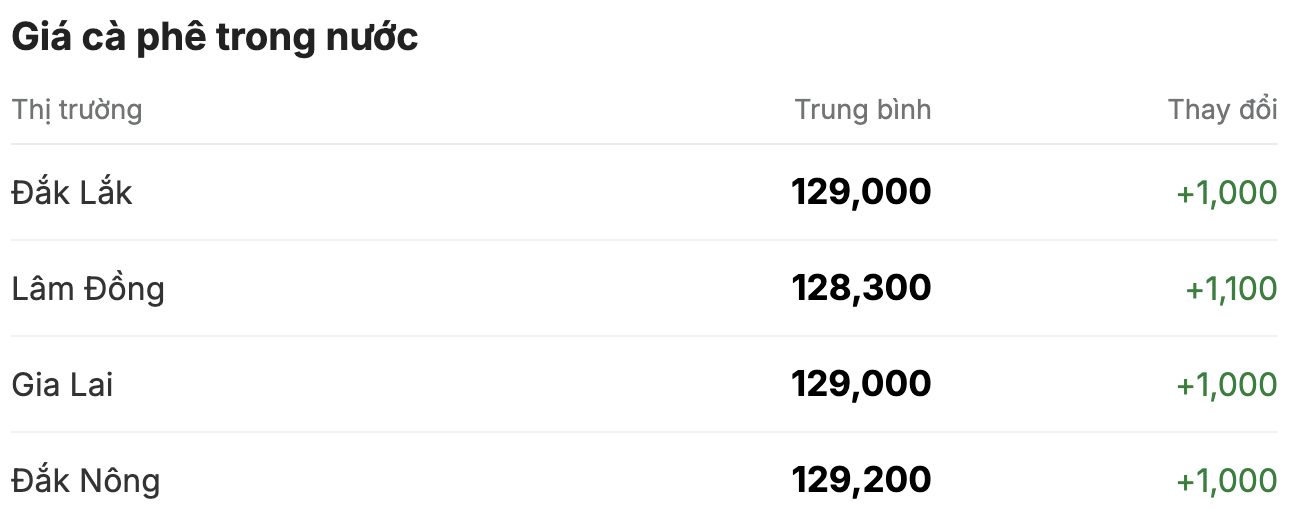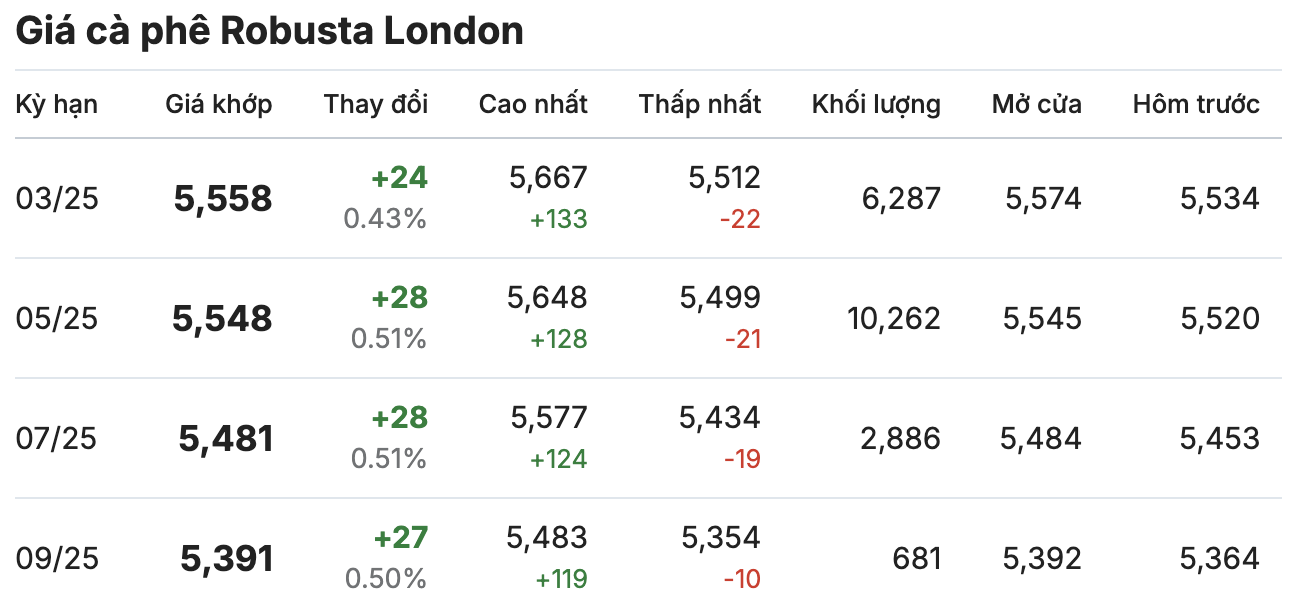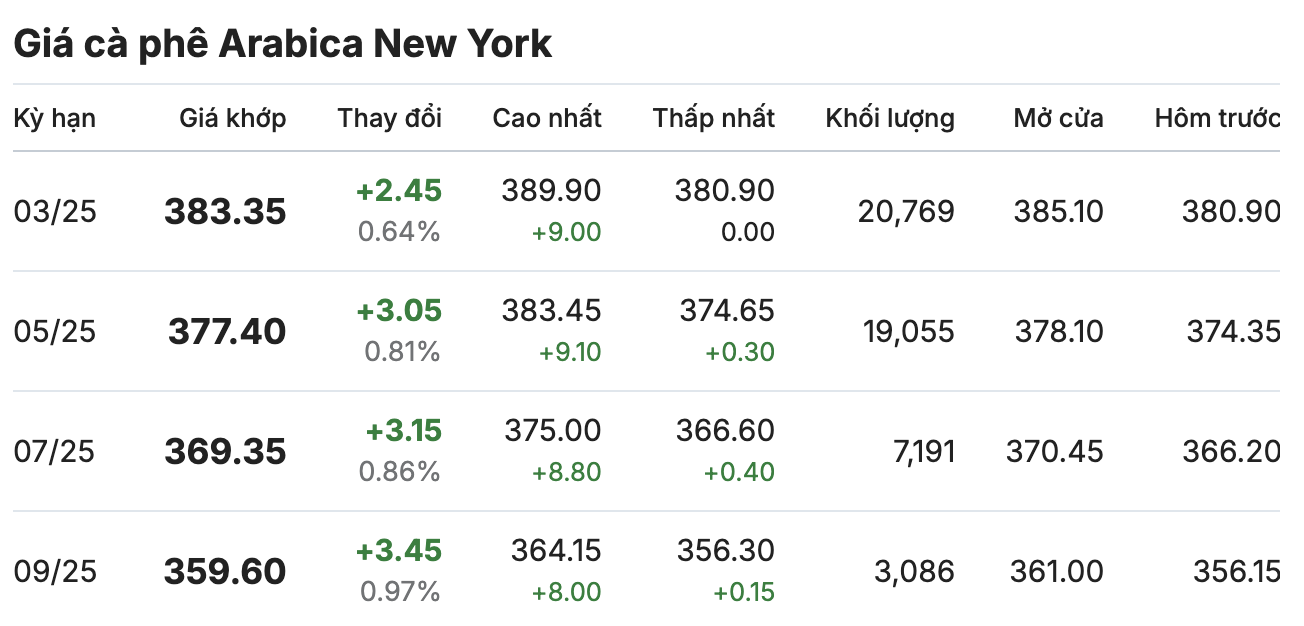As of 11:30 a.m. today (February 5), the domestic coffee market has reversed and increased again after a deep decline, increasing by an average of VND 1,000/kg per session, with the current purchase price fluctuating between 128,300 VND - 129,200 VND/kg. The average coffee purchase price in the Central Highlands provinces today is 129,100 VND/kg.
Lam Dong is still the province with the lowest coffee purchasing price in the Central Highlands, with a difference of about 800 VND/kg compared to the average price. Compared to the previous closing price, coffee prices in this region reversed and increased the most, up to 1,100 VND/kg, reaching the market price of 128,300 VND/kg.
Purchasing higher than Lam Dong, coffee prices in Dak Lak and Gia Lai provinces today are listed at 129,000 VND/kg, an increase of 1,000 VND/kg.
Dak Nong is still the province with the highest coffee purchasing price in the country, currently at 129,200 VND/kg.

On the London and New York exchanges, the coffee market moved in the same direction across all terms.
On the London Robusta Coffee Exchange, coffee prices turned slightly higher. The contract for delivery in March 2025 increased by 0.43% (equivalent to 24 USD/ton), standing at 5,558 USD/ton. The contract for delivery in May 2025 also increased by nearly 1% (equivalent to 28 USD/ton), listed at 5,548 USD/ton.

Similarly, the New York Arabica coffee market continued to push prices higher. The March 2025 and May 2025 delivery periods were at 383.35 cents/lb and 377.40 cents/lb, respectively, up nearly 1%.

Arabica coffee prices rose for a ninth straight session to a new record, Reuters reported, as roasters scrambled to secure supplies while Brazilian farmers remained hesitant to sell.
Traders say many speculative investors are rushing into the coffee market on a buying spree, causing roasters to panic buy and farmers to delay sales in the hope that prices will rise further.
In Brazil, where 85% of the 2024-25 crop has been sold, concerns have been raised about low inventories and the industry's ability to meet domestic and export demand over the next six months.











